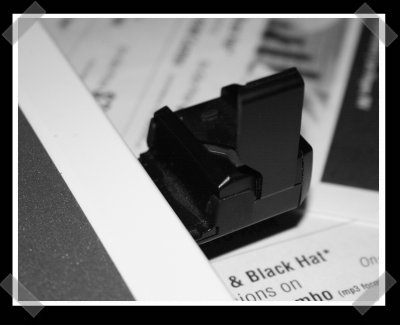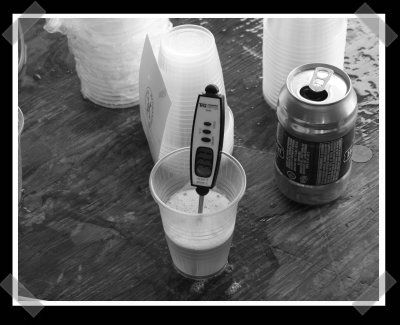
[King Tuna]’s Hacking EVDO was a popular talk. Things are really just starting on this front. Now that some of the newer cards have unlocked firmware (probably thanks to the need for sofware update EVDO revisions), It’s now possible to edit the firmware. With the door open, people can start mucking around with ESN’s and we’ll probably see some ESN duplication exploits soon.
Defcon 15: WiCrawl From Midnight Research Labs

[Aaron] gave the latest on WiCrawl. The focus has been on the UI and usefulness for penetration testing. It’s got support for [David]s coWPAtty FPGA WPA cracking accelerator and some UI improvements. Even better, you can grab the WiCrawl module to put on a BackTrack Slax livecd from the project page. [Aaron] passed out some CD’s at the talk – I’ll update if the ISO gets posted.
And yes, I think I finally recovered from playing Hacker Jeopardy on team MRL. We held our own, but lost on the (LAME) final jeopardy question.
Defcon 15: Undercover Reporter Flees
I’m guessing this was pretty widely reported, but an NBC undercover reporter fled after being outed in the opening session. NBC Dateline associate producer Michelle Madigan refused press credentials on four separate occasions, choosing instead to pose as a normal attendee in order to covertly film other attendees. Defcon has a long running tradition of playing”spot the fed”, where attendees out people they think are federal agents. The feds play along and it’s all good fun. This was entirely different though: the game “spot the undercover reporter” was announced and she fled immediately, only to be filmed “To catch a predator” style.
I may just be a blogger, but I’m wearing my press pass proudly.
Defcon 15: Robot Challenge

Hack-A-Day reader [Colin] brought this machine to the robot challenge. He’s by himself, but managed to get this thing through airport security and it fit inside a single suitcase. He used a serial controlled eight channel servo controller, a usb-serial adapter and a hub to bring the wires together. Power is supplied by a pc supply and the system controlled by his laptop. The challenge was pretty popular and the teams were busy, so I’m light on the details. The gun just behind was servo operated, and performed pretty well in the tests I saw.
Defcon 15: Beer Cooling

When I checked it out, only two teams had appeared for the cooling contest. The method of choice? Rubbing alcohol and dry ice. The dry ice cools the alcohol, but doesn’t freeze it. [Team Hebrew] was my favorite – they used a vinyl hose to carry the beer into the cooling liquid. They managed a 45 second run at one point, and used a simple electric blower to evacuate the beer from the cooling line. They found that it was a bit easier to just blow it out the old fashioned way.
Getting Ready For Defcon 15

Just stoking up a bit for Defcon 15 later this week. [Eliot] and I’ll both be there.
My personal coffee stash is down to a single selection of Ethiopian Yirg, so I probably won’t enter the coffee wars. (But I might stop by and add some Hack-A-Day swag to the pot for the winner.)
The final speaker schedule looks really good. It’ll be difficult to decide which talks to visit. The DefconBots event should be interesting. I’m hoping to see some original hardware creations.
Looks like wireless cracking is still one of the most popular topics. Hack-A-Day friend [Aaron] of Midnight Research will be presenting the latest on wicrawl.
Oh, and just prior to Defcon, the Pwnie Awards will take place at Black Hat.
See you in Vegas!
Preserve Your Plants With An Automated Terrarium
For those of us who aren’t blessed with a green thumb and who are perhaps a bit forgetful, plants can be surprisingly difficult to keep alive. In those cases, some kind of automation, such as [Justin Buchanan]’s Oasis smart terrarium, is a good way to keep our plants from suffering too much.
The Oasis has an ultrasonic mister to water the plants from a built-in tank, LED grow lights, fans to control airflow, and a temperature and humidity sensor. It connects to the local WiFi network and can set up recurring watering and lighting schedules based on network time. Most of the terrarium is 3D-printed, with a section of acrylic tubing providing the clear walls. Before installing the electronics, it’s a good idea to waterproof the printed parts with low-viscosity epoxy, particularly since the water tank is located at the top of the terrarium, where a leak would drip directly onto the control electronics.
Continue reading “Preserve Your Plants With An Automated Terrarium”












